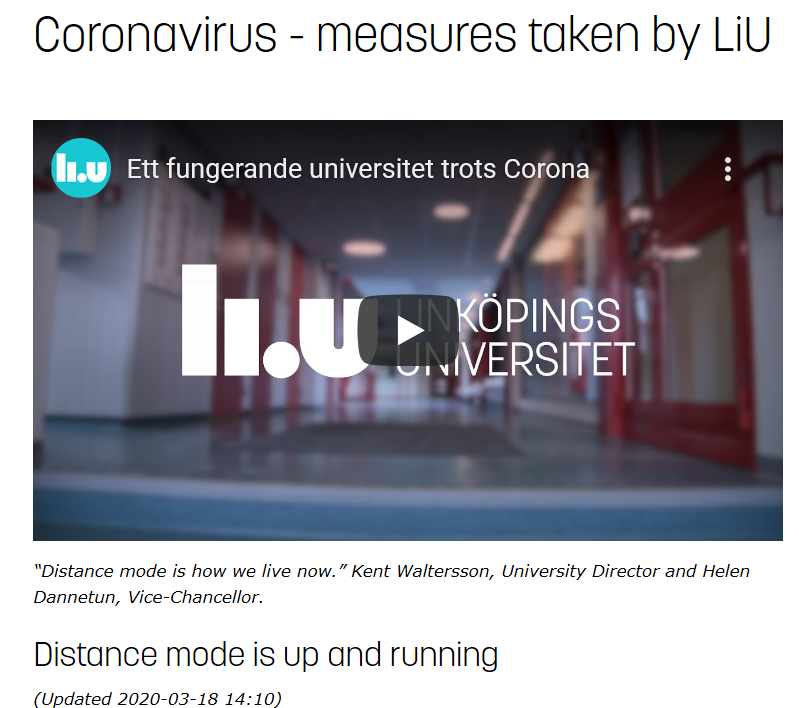As a result of the Covid-19 pandemic, the campus of many universities and schools in many countries have closed temporarily to slow the spread of the virus. These closures have impacted up to now over 89% of the world’s student population (i.e. 1.54 milliard students)(1). At Linköping university where I work, all teaching shifted suddenly to online learning from March 18th

This accute situation made that I had to shift to online learning as a teacher in an accelerated way at the same time that I was learning to do online learning as a student in the ONL course.
This experience shows also how the digital revolution may change pedagogy as it removes barriers and make education accessible to large community of learners across the world. Openness and sharing is very positive in the sense that it gives following possibilities for education: inclusive, freedom to criticize, transparent, reliable, participating, freedom to share, reuse and redistribute. These advantages of e-learning are very much in line with the objectives of Horizon 2030 goal 4:ensure inclusive and equitable quality education and promote lifelong learning opportunities for all (2).
I had been myself taken a MOOC course at FUN (France Université Numérique) before this ONL course. I found the learning material to be of high quality, fun and had nice features like being self-paced, with videos online (that you can play several times), and with ingredients of active learning with online quizz providing instant feedback. In comparison the ONL course brings additionnally many interactions with peer co-learners and facilitators and collaborative learning skills (advanced skills).
The question is despite the increase of use and availability of new education technology that is challenging, the “in-campus” learning is still the most dominant way to get an academic degree compared to the MOOCs. It might be because for MOOC to replace higher education they would need first to ensure quality control of content, cope with a diverse range of students and abilities and develop assessment methods and procedures that can be defended (3). The “magic of the campus” (4) might be another factor in favor of “in-campus” learning. The social, sporting and cultural capital and all the informal learning that happens in the campus are invaluable. There are lot of soft outcomes in terms of interactions we can not measure (sports activities, music activities like orchestra or choir) that happens in the campus.
After the Covid-19 pandemic will be finished, which learning pedagogy would I like? As I have been working distance from home I really appreciated the value of e-books and of open educational resources and information open in the internet. So even if in theory a lot of information is available in the internet, learners will still need the pedagogy to transform this information into knowledge.
Personnaly I would prefer a mixture of online and face-to-face learning. Maybe the solution is flipped classroom where students optimize the time in the campus to make activities that develop higher competence skills and learn facts at home with short videos prior to in campus meeting. This allows to design the teaching to match the specific need of students you are giving the course.